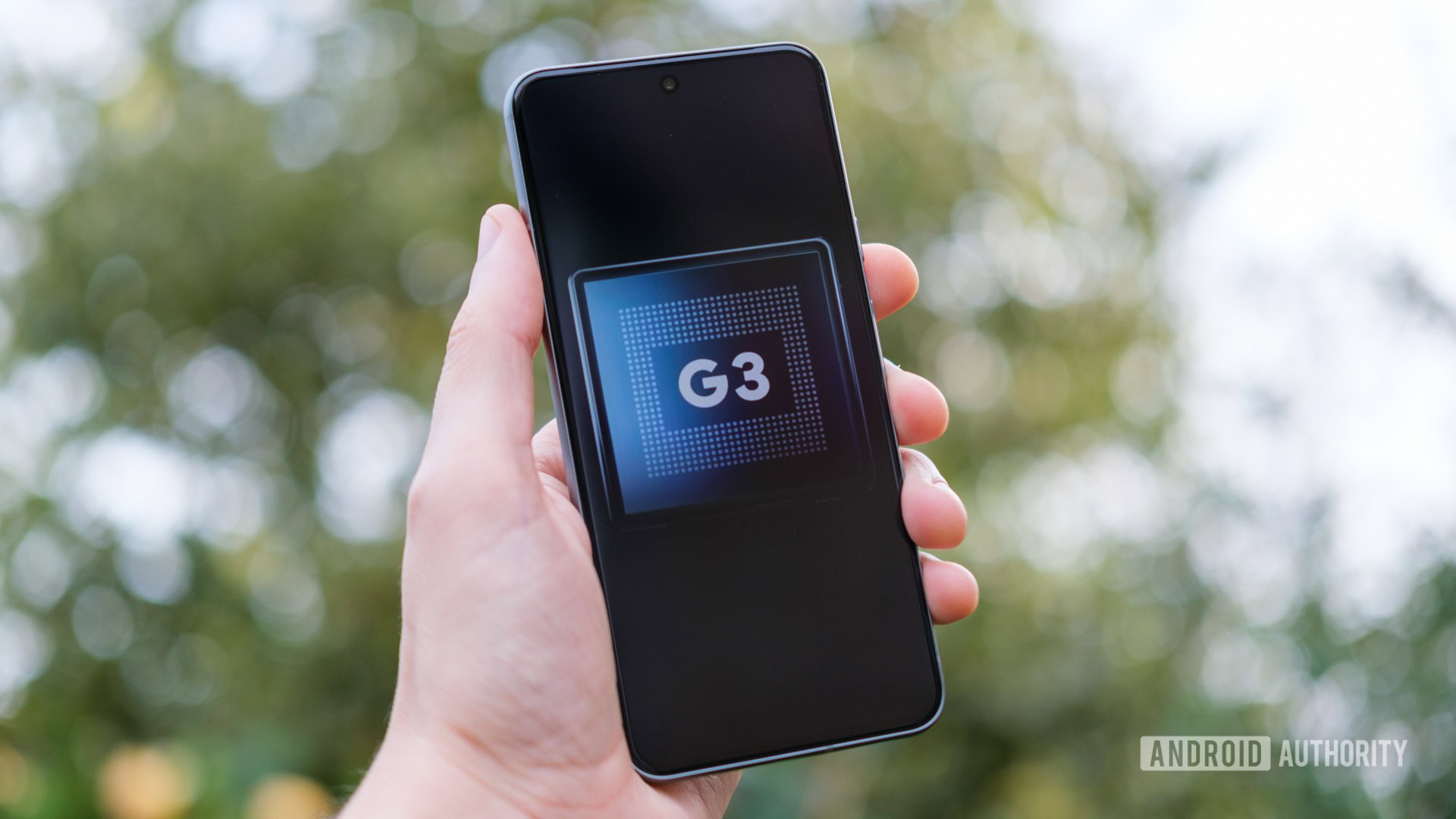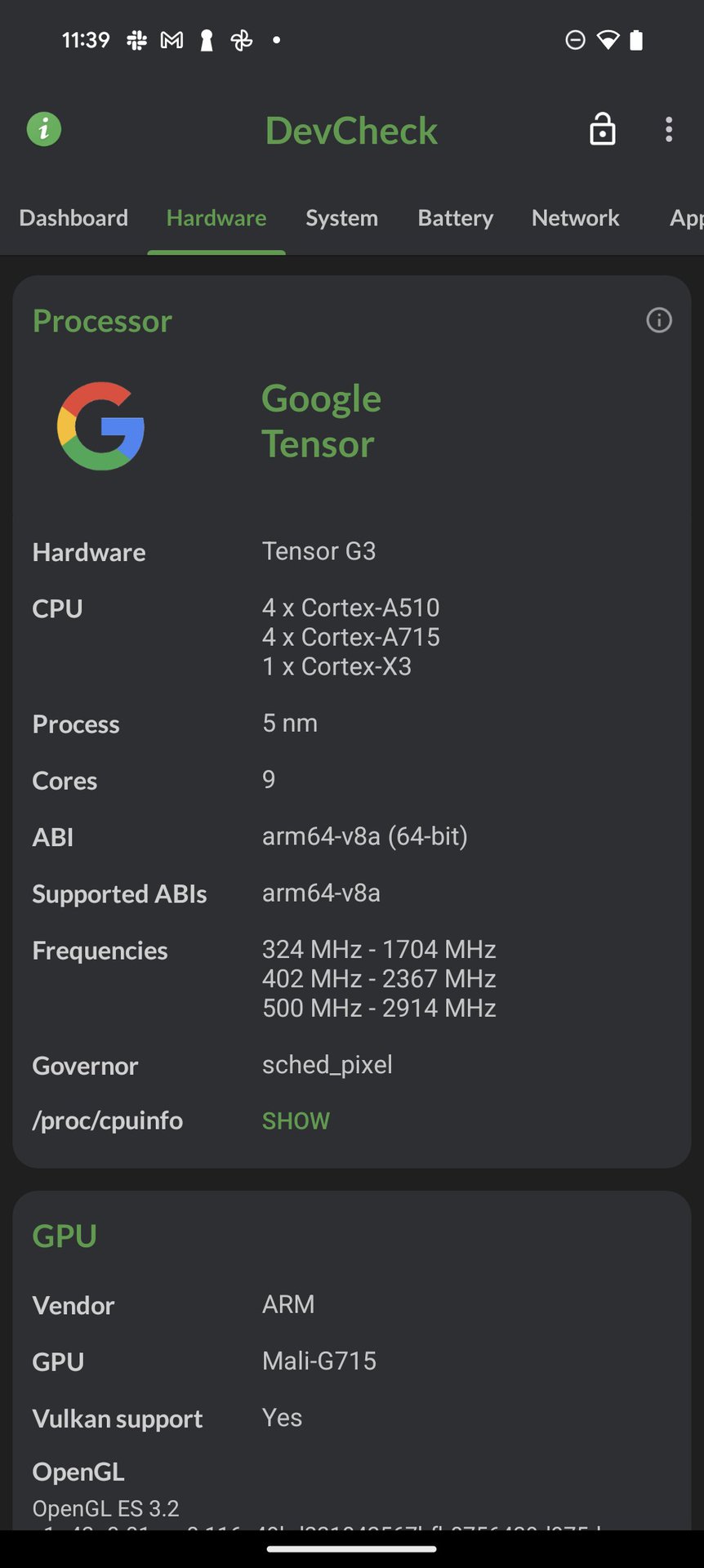Affiliate links on Android Authority may earn us a commission. Learn more.
The Tensor G3 was supposed to be more powerful than what it currently is
Published onOctober 13, 2023

- Google has released the source code for the Pixel 8 series.
- It confirms that the Tensor G3 originally had higher peak frequencies, in line with our early leaks.
- However, Google capped the frequencies to lower values, possibly aiming to prioritize battery efficiency over peak performance.
Google has recently launched the new Pixel 8 and Pixel 8 Pro with the new Tensor G3 SoC. This new SoC is better than the Tensor G2 before, but that was expected. Our own Tensor G3 spec leak suggested that Google would move to a new CPU block with a newer core layout boasting higher peak frequencies. But the final Tensor G3 shipped by Google came with lower frequencies. There was a change of plan somewhere along the way, and the Pixel 8’s source code points to the same.
As highlighted by Kamila Wojciechowska, Google had initially planned to use a higher set of peak frequencies on the Tensor G3 but then changed it to the lower values currently live on the Pixel 8 phones. We can see a bunch of commits in the Pixel 8 Pro’s source code that lowered frequencies for all the cores.
Here are the reported frequencies from the Tensor G3 on the Pixel 8 Pro:

For reference, here is a comparison table between the currently live peak frequencies against the leaked specifications:
| Tensor G3 | Actual peak frequency | Leaked peak frequency |
|---|---|---|
| Tensor G3 1x Arm Cortex-X3 | Actual peak frequency 2.91GHz | Leaked peak frequency 3.0GHz |
| Tensor G3 4x Arm Cortex-A715 | Actual peak frequency 2.37GHz | Leaked peak frequency 2.45GHz |
| Tensor G3 4x Arm Cortex-A510 | Actual peak frequency 1.70GHz | Leaked peak frequency 2.15GHz |
Kamila speculates that this lowering of CPU frequencies could be for various reasons. Google may not want the higher frequencies ever to be used, or a hardware bug could make the higher frequencies unstable or otherwise problematic.
As noted in our previous Tensor G3 benchmark coverage, the Tensor G3 appears to be geared more towards power efficiency than raw performance. Those looking for blazing-fast performance all the time will be disappointed by the Pixel 8 series, and it’s not a phone to get for prolonged stress tests either. But the silver lining is that the Pixel 8 series performs much better in our battery life tests, gaining several hours of additional use in our web and video playback tests.

Fun, exclusive Android 14 customizations
Industry-leading update promise
Eagle-eyed readers may have spotted that the screenshot above mentions the Tensor G3 as a 5nm process SoC, while it is widely believed to be a 4nm SoC. CPU information apps can have data entry errors and are not always accurate. Still, Google has also been curiously tight-lipped about the Tensor G3’s specifications, refusing to divulge more details to us upon specific inquiry. We cannot shed more light on this discrepancy at this stage.

